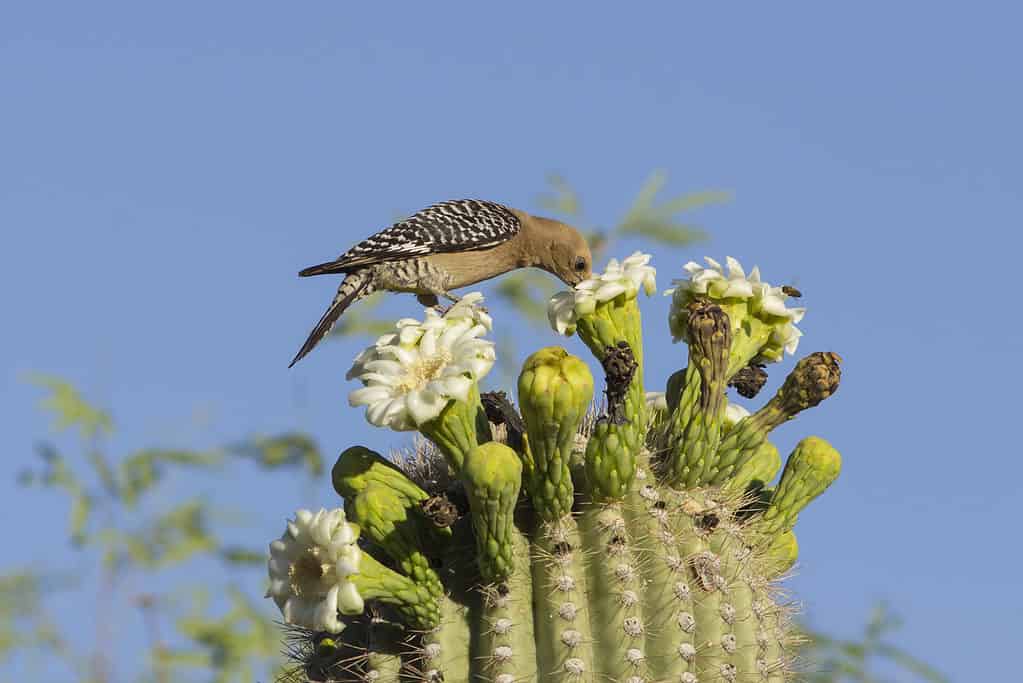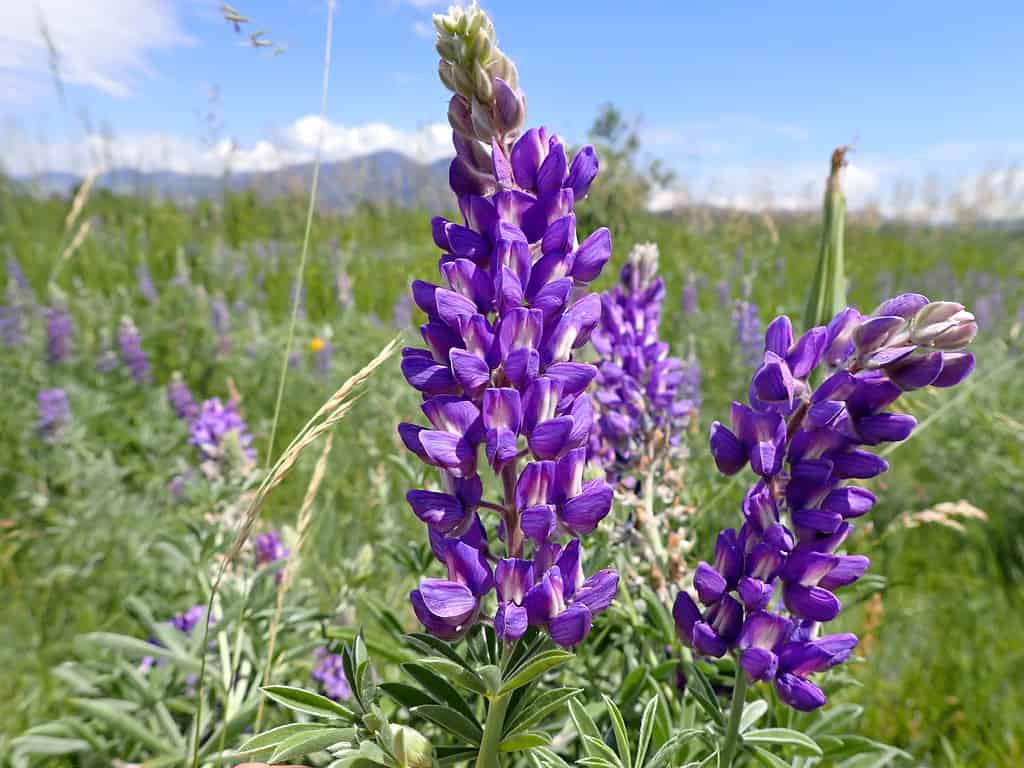The Southwest region of the United States has lots to offer both residents and short-term visitors. From world-famous nature parks like the Grand Canyon to over 84 national parks, there is no shortage of sites to see. Arizona, in particular, is home to a whopping 22 national parks — all with varied flora and fauna. But one of the best aspects of the state are the wildflowers in Arizona. As the sun paints the desert with hues of gold and crimson, the bright native blooms offer unique visuals that stand out from the otherwise arid surroundings. From delicate petals that defy the harsh climate to bold blooms that beckon native animals closer, let’s venture into the enchanting world of captivating wildflowers in Arizona!
Before we move on, you must remember to beware! If you visit this state for a nature tour of all the wildflowers in Arizona, make sure to prepare properly for your outdoor adventure. First, it’s crucial that you bring the correct gear and supplies. This includes proper footwear, sunscreen, hats or visors, and sun-protective clothing. Pack plenty of water (extra is always better than not enough!), snacks, and GPS-enabled devices. This is particularly important in case there is any kind of emergency. Enjoy the immense beauty of the state, but always pack for your safety while exploring in nature! Having said that, let’s continue onward with our discovery of the five most mesmerizing wildflowers in Arizona.
1. Mexican Gold Poppy (Eschscholzia californica):

Native Indians used the golden poppies for medicinal purposes. But the flower is toxic if ingested in its raw form.
©Sumikophoto/Shutterstock.com
Often spotted throughout the Sonoran Desert is the Mexican gold poppy, which is a subspecies of the California poppy. This native species features dazzling golden-orange blooms that carpet the southwestern landscape at the onset of the spring season. Along with their ornamental uses, Mexican poppies have also been used for centuries by Native Americans for relaxation. They are also great for wound healing. Known for their resilience to high heat, these wildflowers in Arizona stand as a symbol of tenacity and change, even in the most extreme desert climates!
Key Identification Tips: This silver-blue-green plant is typically small and bushy, with waxy, marbled, fern-like leaves. It also has a notable hollow stem and “pepper shaker” seed capsules. The Mexican gold poppy has large, cup-shaped flowers with a deep orange to golden color.
Ideal Time to Visit: The Mexican gold poppy blooms from early to late spring. This occurs in mid-February through March or mid-April.
2. Saguaro Cactus Blossom (Carnegiea gigantea):

Gila
woodpecker
and bees on Saguaro cactus flowers.
©iStock.com/tntphototravis
When people think of Arizona, the iconic Saguaro likely comes to mind! These tall cacti are members of the family Cactaceae. This family includes a variety of species of flowering plants that have succulent stems. One of the most well-known flowering cacti species is the Saguaro cactus, which is a native keystone species in Arizona’s Sonoran Desert.
This plant produces striking white flowers that bloom at night and close around midday. These large, fragrant blossoms are a vital food source for desert wildlife, including nocturnal pollinators like bats and moths. These wildflowers in Arizona also serve as a natural spectacle for thousands of people during their short-lived blooming periods in late spring. Triggered predominately by the heavier winter rain, increased day length, and warmer spring-time temperatures, these cacti blossoms are a must-see on your visit to Arizona!
Key Identification Tips: Saguaro have a distinct columnar body with trunk-like arms. It has white, bell-shaped flowers that are 2 to 2 1/2 inches in diameter and approximately 5 inches long.
Ideal Time to Visit: The last two weeks of April, or the last week of May through the first week of June is the best time to see these wildflowers. Visiting at night is recommended to ensure the best bloom sightings.
3. Globemallow (Sphaeralcea):

The desert globemallow grows wild across almost all of the Sonoran Desert.
©Bryony van der Merwe/Shutterstock.com
Globemallows are plants with delicate pink-orange blossoms. They thrive in the dry, desert regions of Arizona and typically bloom throughout spring, summer, and fall. These resilient wildflowers in Arizona are highly drought-tolerant, making them one of the most suitable plants for ornamental gardening in the state. Their leaves and roots can also be used medicinally to treat snakebites, burns, sores, and swelling. Additionally, Native Americans have consumed globemallow to minimize the effects of common colds, the flu, coughing, and diarrhea.
Key Identification Tips: The globemallow is one of the brightest wildflowers in Arizona. It can be identified by its hibiscus-like flowers, which come in various shades of pink, orange, and lavender. The leaves are gray-green, 3-lobed, and toothed, with distinct veining and serrated margins.
Ideal Time to Visit: The flowering season spans from late spring to early fall in Arizona, but peak blooms typically occur between late spring and early summer.
4. Desert Lupine (Lupinus sparsiflorus):

This eye-catching plant contains potent toxins that are harmful to both humans and animals. During spring, the newly emerging growth is particularly poisonous.
©Matt Lavin / CC BY-SA 2.0 – License
Experts estimate the number of lupine plant species to be between 200 and 500 worldwide. While smaller clusters can be found in North Africa and throughout the Mediterranean, most of these species are found as wildflowers growing across North America. The desert lupine, otherwise known as the Mojave lupine, is a well-loved annual herb variety widely known for its gorgeous blue-violet hue. Typically blooming in early spring, they are hardy wildflowers in Arizona that thrive predominately in sandy soil and along rocky slopes. Desert lupines are a favorite among pollinators and are cherished by hikers and nature enthusiasts alike.
While that is true, you should still stand clear of this plant species and not let their looks fool you! The desert lupine is actually quite dangerous. That is because the seeds and pods of lupine are toxic to humans and animals, causing the deaths of hundreds of cows and sheep each year. It has even been linked to birth defects as well! Though rarely fatal in humans, children who eat lupine seeds or pods often feel dizzy and lose coordination. Interestingly, not all species of lupine are toxic, but the majority of those found in the southwestern U.S. are! For that reason, it’s best to not consume any parts of this plant and simply admire it from afar!
Key Identification Tips: This lupine species is commonly found in the south-central mountains of New Mexico and Arizona. Alternatively, they can be found growing in open roadsides or on road banks. It has palmate leaves with 8–10 leaflets, arranged like spokes on a wheel.
Ideal Time to Visit: The flowering season for lupines varies based on the variety and zone. However, they usually bloom from late spring to early July.
5. Indian Paintbrush (Castilleja):

Nature enthusiasts love the Indian paintbrush wildflower because of its bright scarlet red bracts.
©iStock.com/leekris
The Indian Paintbrush is a whimsical wildflower in Arizona characterized by its vibrant red, orange, or pink bracts that resemble “a painter’s brush lightly dipped in white paint.” Adding a pop of color to the desolate desert landscape, this species is often seen growing in rocky soils and open meadows, especially those that have medium-dry to medium-wet soil. Interestingly, the Indian paintbrush is considered a parasitic plant due to its unique ability to photosynthesize AND sequester nutrients from other organisms. To put it simply, if it can’t get its own nutrients, water, or minerals, it spreads its roots out until it finds another plant to steal nutrients from. In many cases, the parasitized plant is frequently a grass like Blue Grama, Buffalo Grass, Sweet Grass, or June Grass.
Key Identification Tips: The Indian paintbrush can grow to be up to three feet tall and has clover-like petals that are about one inch long. The flowers can be red, orange, yellow, white, or cream, but red is the most common variety. They also have hairy, upright stems.
Ideal Time to Visit: They can be a biennial or annual plant, typically blooming in late spring to early summer, with peak flowering events in May and June.
The photo featured at the top of this post is © Felicia Morack/Shutterstock.com
Thank you for reading! Have some feedback for us? Contact the AZ Animals editorial team.






